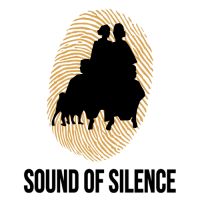Sound of Silence
Strengthening Tribal Women’s Voices and Leadership for Climate Risk Reduction among Tribal Communities in the Sundarbans, India
Sound of Silence: Strengthening Tribal Women’s Voices and Leadership for Climate Risk Reduction among Tribal Communities in the Sundarbans, India is an action research project designed to amplify and incorporate the voices and experiences of the unheard: tribal communities in the Sundarbans Biosphere Reserve into discourses and action on climate change and sustainable development in India. The project includes an ethnographic survey and participatory vulnerability and capacity assessment to identify the needs and challenges of these marginal communities, and a pilot initiative of delivering innovative community-led solutions to reduce climate risk by empowering and building the capacity of tribal women to lead action to reduce their communities’ climate risk, enhance adaptive capacity, promote biodiversity conservation, and strengthen their self-reliance and wellbeing.
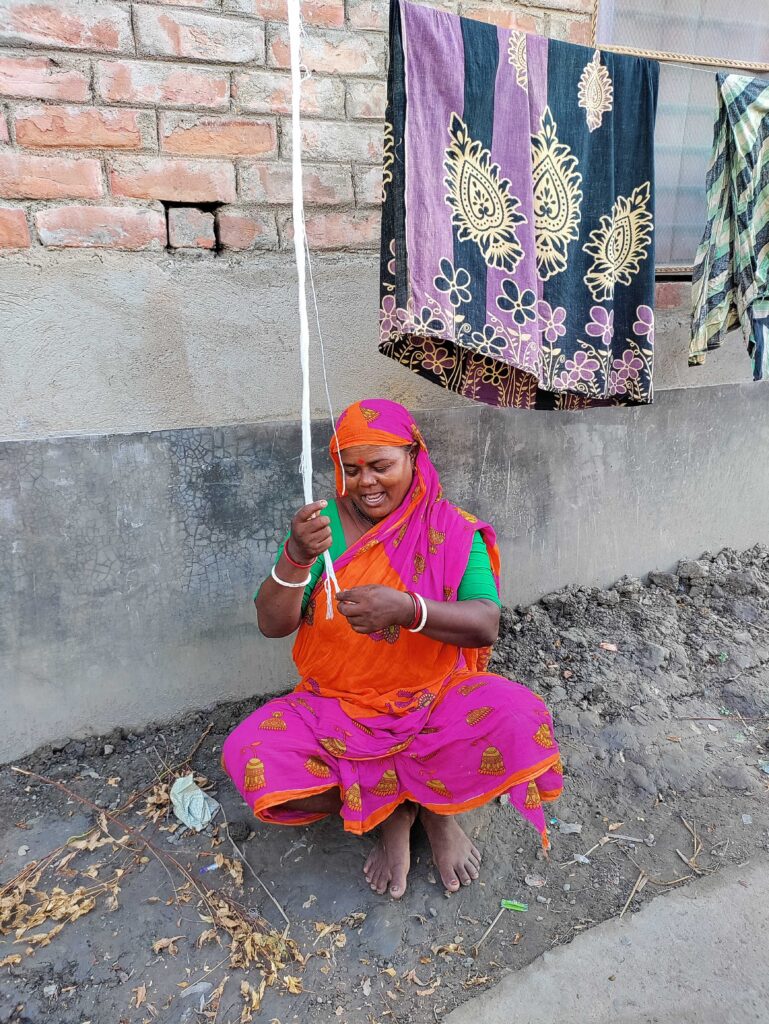
Sound of Silence has committed itself to identifying best practices that are participatory, gender-responsive, and rooted in the local indigenous knowledge, culture and context of marginal communities in the Indian Sundarbans. Interventions include skill development training for diversifying livelihoods, organic agriculture, participative shore protection, dissemination of block-level weather forecast, agro-advisory and hazard warning (cyclone and surge), health camps, vaccination drives, mental health counselling workshops, and efforts to strengthen local healthcare service delivery, available psychosocial support bases and access to government health schemes.
The knowledge gained from this participatory action research will be shared with relevant stakeholders as well as widely through our blog and other social media.


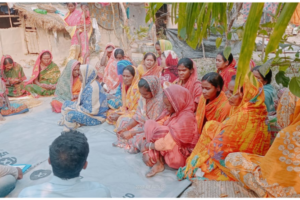
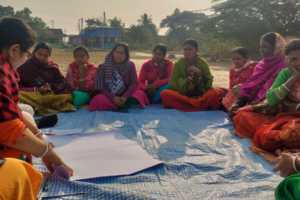
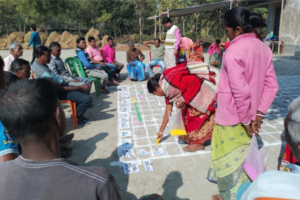
The project will be carried out in 4 phases:
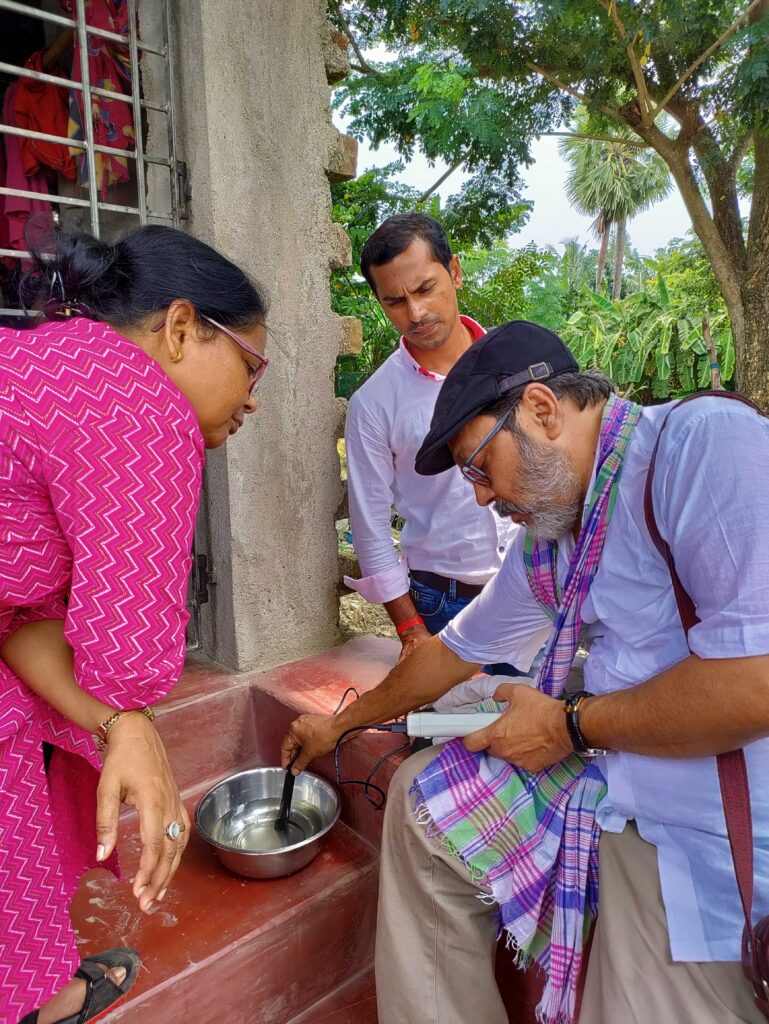
Sound of Silence has committed itself to identifying best practices that are participatory, gender-responsive, and rooted in the local indigenous knowledge, culture and context of marginal communities in the Indian Sundarbans. Interventions include skill development training for diversifying livelihoods, organic agriculture, participative shore protection, dissemination of block-level weather forecast, agro-advisory and hazard warning (cyclone and surge), health camps, vaccination drives, mental health counselling workshops, and efforts to strengthen local healthcare service delivery, available psychosocial support bases and access to government health schemes.
The knowledge gained from this participatory action research will be shared with relevant stakeholders as well as widely through our blog and other social media.
Community-led interventions to increase climate risk reduction and improve socioeconomic resilience will include promotion of climate adaptive and diversified livelihoods, organic agriculture, participative shore protection, establishment and maintenance of information hubs, and dissemination of weather forecast, agro-advisory and hazard warning (cyclone, surge) at the block level. These will be accompanied by health camps, counselling workshops, vaccination drives, physical health and sports training, and efforts to collaborate with local health practitioners to strengthen local healthcare infrastructure and psychosocial support bases, to promote good health and wellbeing among the tribal communities as well as improve their access to government health schemes and programs.

These activities will be led by local women’s self-help groups, in an effort to not just acknowledge women’s disproportionate share of domestic and farm work, exposure to intimate partner violence and other forms of abuse, and limited access to adequate mental and physical health support, but also uplift them to agents of change within their families and communities by strengthening their knowledge and resource base to improve their socioeconomic resilience, health and wellbeing, and overall life satisfaction.
The project has committed itself to conducting climate adaptation and capacity building approaches that are community-led, gender-responsive, culturally sensitive, and participatory, and that consider vulnerable groups, communities, and ecosystems. We deliver an action research programme which seeks to understand how elevating and incorporating the voices of and experiences of local tribal people into the climate change and sustainable development policy conversations can achieve the country’s sustainable development aims.

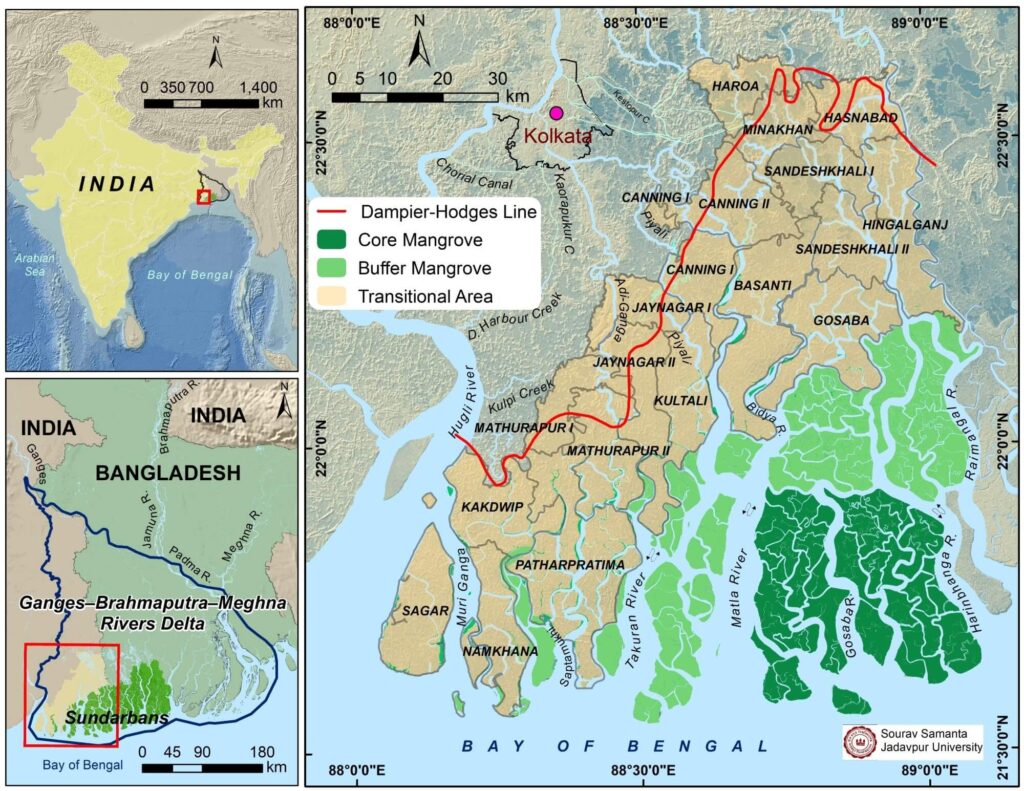
Project Area
The Sundarban Biosphere Reserve (SBR) is the western part of the lower region of the Ganga-Brahmaputra-Meghna Delta, one of the world’s most dynamic deltas spanning most of Bangladesh and parts of the state of West Bengal in India. A biodiversity and climate hotspot, the region was declared a UNESCO World Heritage site since 1987 for constituting the world’s largest mangrove forest (the only one with a tiger population, the endangered Royal Bengal Tiger). The region comprises of nearly 100 geologically young islands, only 54 of which are inhabited. Out of a total land area of 9600 km2, which includes both human settlements and protected mangrove forests of the Divisional Forest area – the Sundarban Tiger Reserve and the Sundarban National Park, 5400 km2 is densely populated with nearly 4.5 million people, of which 0.2 million are tribal peoples. This inhabited area is divided into 19 administrative units called community development blocks under the jurisdiction of the North and South 24 Parganas districts of West Bengal.
The project shall be administered in 8 villages across 4 community development blocks, namely, Hingalganj, Sandeshkhali I, Kultali and Kakdwip in the North and South 24 Parganas, respectively.
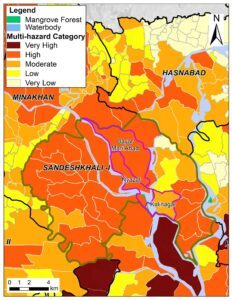
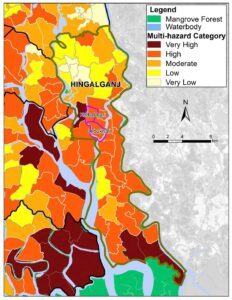
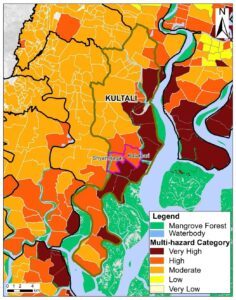
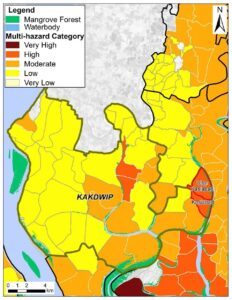
©Research Team
Multi-hazard maps (cyclones, flooding and erosion) of Sandeshkhali I, Hingalganj, Kultali and Kakdwip
Blog
Knowledge-Sharing with Visiting Researchers from Oxford University, UK
Knowledge-Sharing with Visiting Researchers from Oxford University, UK BY SHABERI DAS • December 29, 2023 Fig. 1: Researchers from Oxford University, UK, with community members in Ramganga, …
Participatory planning with relative vulnerability and needs assessment in the project villages
Participatory planning with relative vulnerability and needs assessment in the project villages BY SHABERI DAS, SUGATA HAZRA AND SUDIPA PAL • JULY 12, 2023 Figure: A woman stands in …
Community perceptions of mental health in Hingalganj, Indian Sundarbans
Figure 1: Participants of the mental health group activity in Kothabari Village, Hingalganj Block hold up their responses for the camera Community perceptions of mental …

